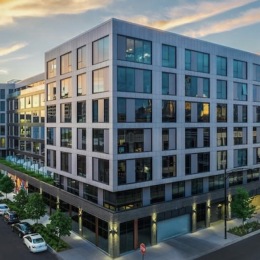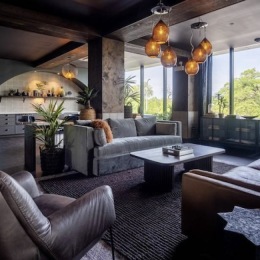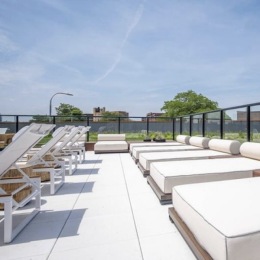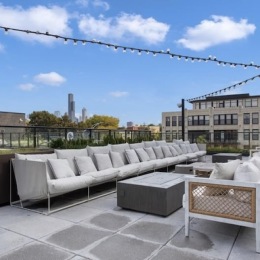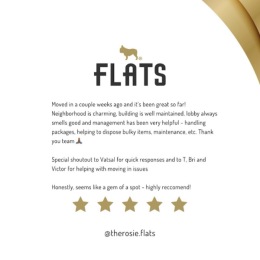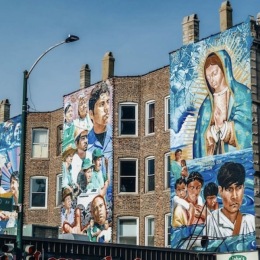Why East Pilsen is Chicago's Next Big Thing
Find Chicago's Most Dynamic Neighborhood on the Lower West Side
East Pilsen is a vibrant neighborhood on Chicago's Lower West Side that blends rich cultural heritage with modern urban living. Located just 9 minutes from downtown Chicago, this artistic hub offers historic architecture, world-class murals, and a thriving creative community.
Quick Facts About East Pilsen:
- Location: Lower West Side, bordered by the Chicago River (east), Halsted Street (west), 16th Street (south), and Roosevelt Road (north)
- Commute to Downtown: 9 minutes via CTA Pink Line
- Known For: Chicago Arts District, 16th Street Murals, Mexican-American culture
- Housing: Converted lofts, vintage two-flats, modern apartments
- Price Range: $500K - $799K for buyers; $1.23K - $3.6K for renters
- Key Attractions: National Museum of Mexican Art, Thalia Hall, Second Fridays art walks
East Pilsen has evolved from its roots as a European immigrant enclave into one of Chicago's most celebrated creative communities. The neighborhood earned its spot on Forbes' list of coolest neighborhoods worldwide, thanks to its colorful street art, thriving gallery scene, and authentic dining options.
The area is distinguished by its combination of preserved historic buildings (some predating the Great Chicago Fire of 1871), a deeply rooted Mexican-American cultural identity, and a growing community of artists and young professionals drawn to its creative energy.
The neighborhood's change into an arts district happened organically over decades. Today, over 30 galleries can be found along Halsted Street, with monthly art walks that draw hundreds of visitors, and massive murals that turn ordinary buildings into outdoor museums.
A Rich History: From Immigrant Roots to a Cultural Epicenter
The story of East Pilsen begins in the mid-1800s, when German and Irish families first settled along the Lower West Side. It was the Czech immigrants who shaped the neighborhood's early identity, naming it after their hometown of Plzeň in the Czech Republic. This connection to their homeland is still celebrated in the neighborhood today.
The area's architecture is a notable feature. East Pilsen is one of the few Chicago neighborhoods that still has buildings standing from before the Great Chicago Fire of 1871. Certain blocks feature historic greystone and brick structures, some of which are more than 150 years old.
Throughout the late 1800s and early 1900s, the neighborhood became a gateway for European immigrants. Slovaks, Slovenes, Croats, Poles, Lithuanians, and Italians all found their first American homes here. By 1934, this mix of cultures had created a thriving working-class community where different languages were spoken and various traditions blended together.
The 1960s brought a significant change. When the University of Illinois at Chicago began construction on its Circle Campus, many Mexican-American families were displaced from their homes in nearby neighborhoods. They found a new community in Pilsen, and by 1970, Latino residents had become the neighborhood's majority.
This shift transformed the area. Mexican-American culture brought vibrant murals, authentic taquerias, and festivals that drew people from across the city. The neighborhood's identity evolved from a European immigrant enclave into a Mexican-American cultural hub that would eventually gain recognition worldwide.
In 2006, the federal government officially designated the Pilsen Historic District on the National Register of Historic Places. This recognition protected the neighborhood's unique architectural heritage and acknowledged its role in telling Chicago's immigrant story.
The Evolution of East Pilsen
The change of East Pilsen was not without challenges. Mexican immigrants in the 1950s and 1960s faced serious discrimination, including signs that read "No dogs or Mexicans" and banks that refused to approve their mortgage applications. These challenges led to a strengthened community response.
Residents organized to fight back against urban redevelopment plans that threatened to displace them once again. When the University of Illinois proposed further expansion, the community mobilized, holding meetings and protests to protect their neighborhood. This activism became part of the area's character.
The preservation of historic buildings became another rallying point. Community members worked to protect the neighborhood's greystone and brick architecture, arguing that these structures represented the stories of generations who had built lives there.
Today, community discourse and politics continue to shape the neighborhood's evolution. As East Pilsen attracts new residents and development, longtime community members remain engaged, ensuring that growth doesn't erase the area's cultural identity. The balance between preservation and progress remains an ongoing conversation, reflecting the neighborhood's past and future.
The Heart of Chicago's Art Scene
East Pilsen is known for its vibrant art scene, with colorful works found throughout the neighborhood. The area's creative energy is evident in its many galleries, studios, and public murals.
The center of this artistic activity is the Chicago Arts District, a seven-block stretch where converted industrial spaces house working artists' lofts and galleries. These venues showcase everything from traditional Mexican folk art to contemporary pieces. The Pilsen Arts and Community House anchors the community's focus on making art accessible, offering programs and exhibitions for neighbors.
A key feature is the 16th Street Murals. This large-scale outdoor gallery transforms a railway embankment into a canvas that stretches for blocks, telling stories of heritage, struggle, and triumph. These murals make statements about identity, community, and the Mexican-American experience. Additional murals, mosaics, and public art installations can be found on building facades and in other public spaces.
The neighborhood's creative pulse can be experienced during the monthly Second Fridays art walk. On these evenings, galleries open their doors and artists welcome visitors into their studios. This free event allows attendees to connect with the neighborhood's creative community and explore new works.
A significant cultural institution in East Pilsen is the National Museum of Mexican Art. As one of the largest Latino cultural organizations in the country, this institution offers free admission to its extensive collection of Mexican art and artifacts. Here, history is presented through its collection and thought-provoking exhibitions.
Defining Characteristics of the East Pilsen Art Scene
The art scene here is characterized by its authenticity. Many murals grew organically from the community itself, often created by local artists working alongside neighbors to tell their shared stories.
Murals and mosaics dominate the visual landscape, depicting everything from Aztec mythology to contemporary social justice themes. These works serve as visual histories, preserving cultural memory and sparking conversations about identity and belonging.
The concentration of artist lofts and studios means creativity is a daily part of the neighborhood. Artists live, work, and collaborate in East Pilsen. This density of creative talent creates an energy that inspires new works and attracts more artists to the community.
Much of the art is community-focused, speaking to and for the people who call this neighborhood home. Whether it's a massive mural honoring Mexican heritage or a small mosaic celebrating a local figure, the art reflects the diverse voices and experiences of East Pilsen's residents.
Living in East Pilsen: Real Estate and Community Vibe
The community in East Pilsen is active throughout the year, with celebrations that bring neighbors together. When autumn arrives, Harrison Park hosts a tribute during Día de los Muertos, with intricate ofrendas honoring loved ones, live music, and families gathering to celebrate this tradition.
Food is a central part of the culture, and the area hosts several food-focused events. The Mole de Mayo festival draws crowds eager to taste this complex sauce in all its variations, while the Pilsen Food Truck Social turns the streets into a rolling feast of flavors. These events are a part of the community, providing moments for longtime residents and newcomers to connect.
For recreation, East Pilsen offers several options. Dvorak Park has space for pick-up soccer games and family picnics. A short walk away is Ping Tom Memorial Park, which offers skyline views and a dedicated dog play area. For a longer route, the Lakefront Trail provides miles of paths for biking, jogging, or strolling along Lake Michigan.
Housing Options in the Neighborhood
The homes in East Pilsen are varied. Vintage two-flats with their original woodwork and brick cottages with front porches speak to the neighborhood's deep roots. These historic structures offer character not found in newer construction, with features like exposed brick and high ceilings.
There are also converted lofts, where old industrial buildings have been repurposed into living spaces. These spots blend industrial elements with modern comforts, often featuring high ceilings, large windows, and open floor plans.
For those interested in contemporary design, new construction projects bring modern lines and current amenities to the neighborhood. The Rosie offers luxury apartments that combine modern conveniences like a rooftop deck and outdoor pool with a location in East Pilsen's creative center. Options for Pet Friendly Living Pilsen are available for residents with pets.
Check out more about Modern Apartments Pilsen to see what fits your lifestyle.
Real Estate Market Snapshot
The East Pilsen real estate market reflects a neighborhood in demand. The housing market here shows the neighborhood's evolution, and it has become a popular area for new residents.
For the latest rental opportunities, take a look at Pilsen Chicago Rent to see what's available right now.
Culinary Delights and Vibrant Nightlife
East Pilsen has earned a reputation as a culinary destination, offering everything from casual taquerias serving generational recipes to more formal dining rooms where chefs reimagine traditional flavors. The culinary scene reflects the neighborhood's heritage while welcoming global influences.
Throughout East Pilsen, the aroma of freshly made tortillas mingles with the scent of slow-cooked meats and pastries from local bakeries. Family-owned restaurants anchor many corners, their dining rooms filled with conversation and activity. For those looking to explore the full range of options, Pilsen Neighborhood Restaurants offers a guide to the area's eateries.
Notable Restaurants
The dining scene here rewards exploration. At Carnitas Uruapan, the specialty is tender, slow-cooked pork carnitas. The casual atmosphere is suited for a quick lunch or an easygoing dinner.
For authentic Mexican staples, 5 Rabanitos serves dishes prepared with care. When the weather is suitable, La Vaca Margarita Bar offers margaritas on its patio, which captures the neighborhood's festive spirit.
Another local spot is Panaderia Nuevo Leon. This bakery is known for its gorditas dulces and an array of Mexican pastries that pair well with morning coffee or an afternoon break.
For those seeking a different style, Mariscos San Pedro presents Mexican seafood dishes in a refined setting. The neighborhood's culinary diversity extends beyond Mexican cuisine as well, with spots like HaiSous offering modern Vietnamese family recipes that add another layer to the area's food culture.
Evening Entertainment and Venues
As daylight fades, East Pilsen's nightlife becomes active. The neighborhood's nightlife centers around Thalia Hall, a venue modeled after the Prague Opera House that stands as one of Chicago's popular entertainment spaces. This historic building welcomes indie bands, comedians, and live DJs to its stage, drawing audiences from across the city.
Thalia Hall offers more than just concerts. Within its walls is Punch House, where cocktails are served in an atmosphere that encourages conversation. Next door, the Tack Room provides a more intimate setting—a piano bar where melodies are played in candlelit spaces.
Beyond these landmark venues, East Pilsen is dotted with local bars like Skylark, where neighbors gather. The nightlife here provides a variety of options, from large venues to neighborhood hangouts, giving residents and visitors choices for how to spend an evening.
Unbeatable Access: Getting Around Chicago
Living in East Pilsen means having strong connectivity to the rest of Chicago. Whether heading downtown for work, exploring other neighborhoods, or running errands, getting around is direct from this Lower West Side location.
East Pilsen sits just 9 minutes from the Loop via public transit. This proximity is a draw for those who work in the city center.
The CTA Pink Line is the neighborhood's transit lifeline, with the 18th Street stop providing direct access to downtown and beyond. The trains run frequently during peak hours, making morning commutes direct. Beyond the L train, major bus routes along Halsted Street and Cermak Road crisscross the neighborhood, connecting residents to other parts of Chicago's vast transit network. These buses are useful for reaching destinations not directly on the Pink Line.
For those who drive, East Pilsen offers direct access to both I-90/94 (the Dan Ryan Expressway) and I-55 (the Stevenson Expressway). This means getting to O'Hare Airport, the suburbs, or other parts of the Chicagoland area is accessible.
But the neighborhood's design also supports local travel without a car. The neighborhood is walkable, with coffee shops, galleries, restaurants, and grocery stores often just a few blocks away. Many destinations are within walking distance.
The area is also bike-friendly, with relatively flat streets and growing bike infrastructure making two-wheeled transportation a practical option. The combination of public transit, highway access, walkability, and bike-friendly streets means residents can choose how they want to get around based on the day, the weather, or their destination.
Frequently Asked Questions about East Pilsen
What makes the neighborhood a unique place to live?
East Pilsen is characterized by its blend of history and modern culture. The neighborhood features buildings that predate the Great Chicago Fire, a vibrant Mexican-American cultural identity, and a significant arts scene. Community events like the Día de los Muertos and Mole de Mayo celebrations are fixtures in the neighborhood. This combination of historic architecture, public art, and community gatherings defines the living experience in East Pilsen.
What are the top attractions in the area?
Top attractions in East Pilsen include the National Museum of Mexican Art, one of the country's largest Latino cultural institutions, which offers free admission. The 16th Street Murals are a large outdoor public art installation along a railway embankment. Thalia Hall, a historic landmark modeled after the Prague Opera House, is a venue for music and performance. The Chicago Arts District along Halsted Street contains over 30 galleries and artist studios, which can be explored during the monthly Second Fridays art walk.
How is the transportation in the neighborhood?
Transportation in East Pilsen is supported by multiple options. The CTA Pink Line stop at 18th Street provides a 9-minute ride to downtown Chicago. Major bus routes operate on Halsted Street and Cermak Road, providing access to neighborhoods throughout the city. For those who drive, East Pilsen is located near both I-90/94 (the Dan Ryan Expressway) and I-55 (the Stevenson Expressway). The neighborhood's walkable streets put restaurants, shops, and parks within reach, while bike-friendly roads make two-wheeled travel an option.
Conclusion: Your Future in a Thriving Chicago Neighborhood
East Pilsen is a neighborhood where historical elements, a thriving arts scene, and a strong community identity converge. Its evolution from a European immigrant enclave to a center of Mexican-American culture is visible in its architecture, public art, and local events.
The area's culinary scene offers a range of options, from traditional Mexican food to other cuisines. Entertainment venues like Thalia Hall provide nightlife and cultural programming.
The neighborhood's location offers a 9-minute transit connection to downtown Chicago, access to major expressways, and a walkable environment with local parks, galleries, and restaurants.
This is a neighborhood that offers an authentic Chicago experience for visitors and a dynamic community for residents. For those interested in living in the area, The Rosie offers apartments that reflect the neighborhood's modern, creative spirit, complete with a rooftop deck, outdoor pool, and spaces designed for contemporary living. View available floor plans to see options for living in this Chicago neighborhood.







